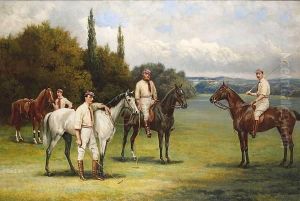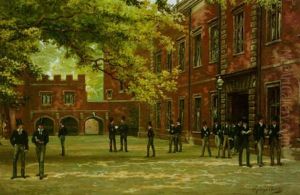Henry Jamyn Brooks Paintings
Henry Jamyn Brooks was a notable British portrait painter whose work primarily spanned the late 19th and early 20th centuries. Born in 1865, Brooks developed an interest in art at a young age, which was nurtured through his education and early career. He is particularly remembered for his portraits of public and political figures of his time, capturing the essence of British society during a period of significant change and development.
Brooks's approach to portraiture was characterized by a keen attention to detail and a commitment to realism, which set his work apart from some of his contemporaries. His ability to capture the likeness and personality of his subjects earned him commissions from various prestigious clients, including members of the British aristocracy and prominent political figures. Despite the popularity of impressionism and other modern art movements during his lifetime, Brooks remained committed to his realistic style, which contributed to his reputation as a traditionalist.
One of Brooks's most famous works is 'The Meeting of the Royal Academy,' a large group portrait that includes many notable artists of the time. This painting, along with his portraits of individuals, provides valuable insights into the cultural and social milieu of late 19th and early 20th century Britain. His work is represented in several public collections, including the National Portrait Gallery in London.
Henry Jamyn Brooks's contribution to British art history is significant, not only for his skill as a portraitist but also for his role in documenting an important era in British society. He passed away in 1925, leaving behind a legacy that continues to be appreciated by art historians and collectors alike. His work remains a testament to the power of portrait painting to capture and convey the nuances of individual character and the spirit of an age.













